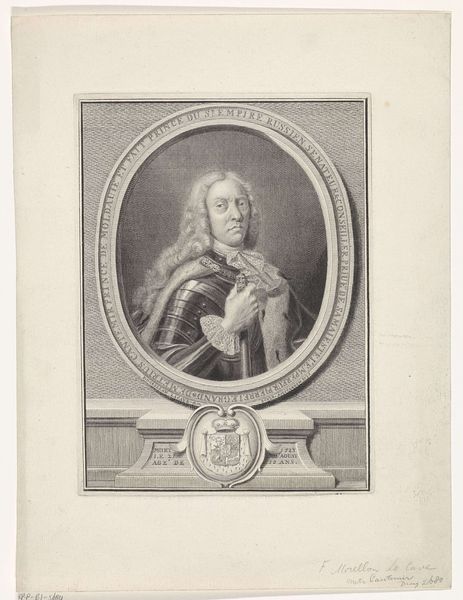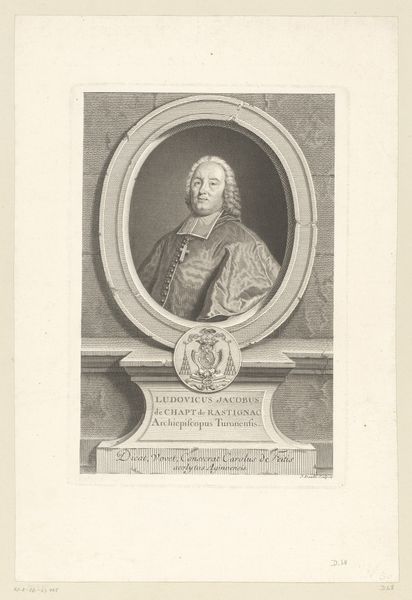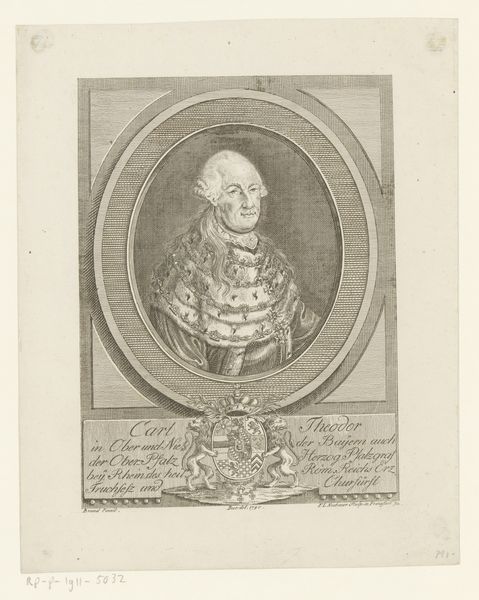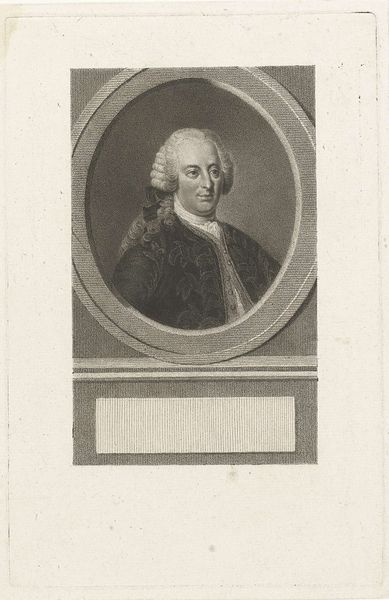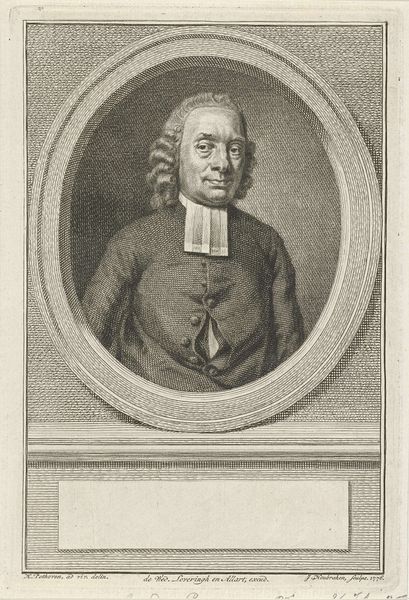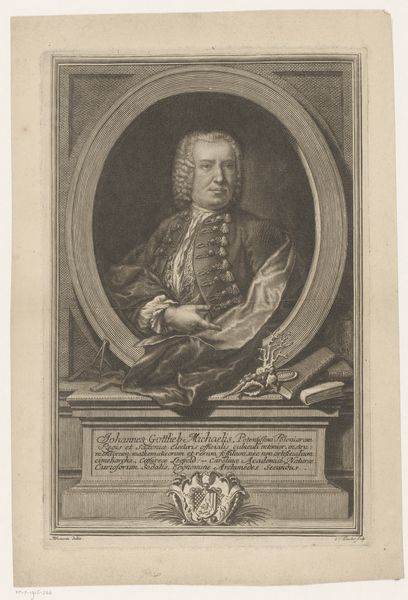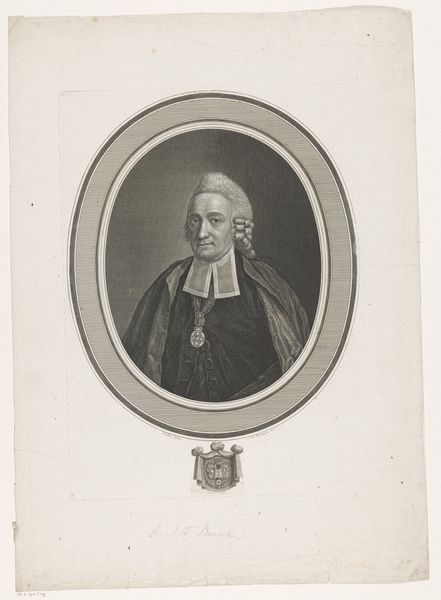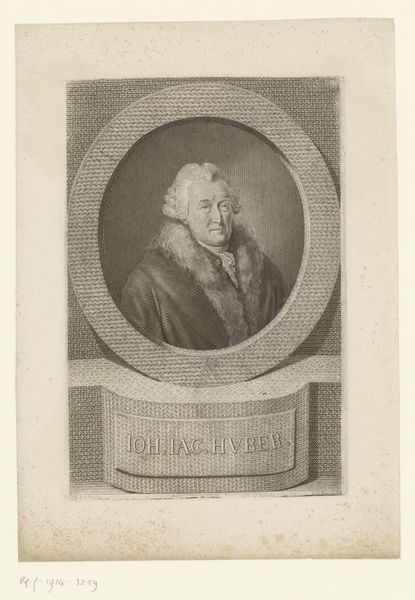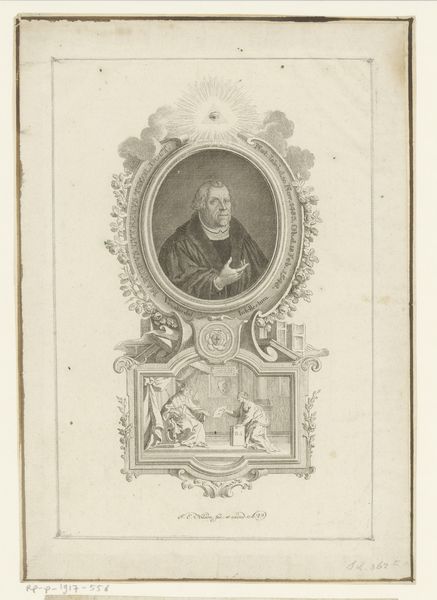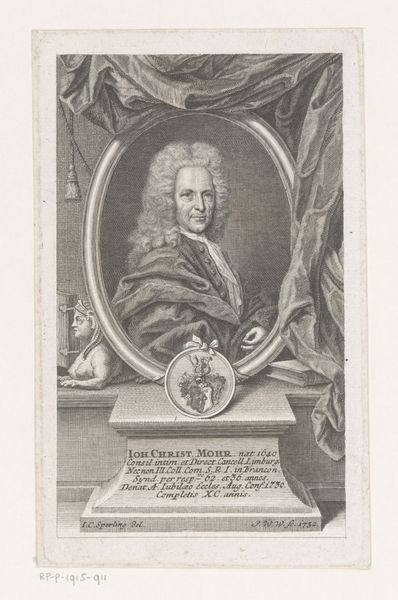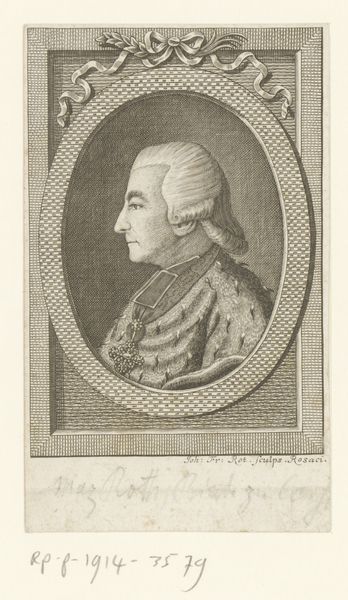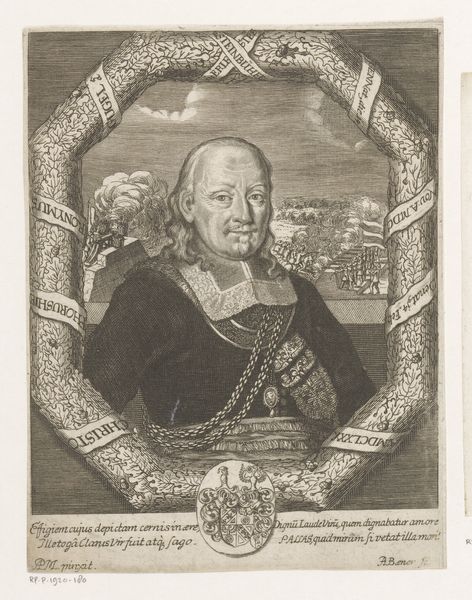
engraving
#
neoclacissism
#
old engraving style
#
history-painting
#
academic-art
#
engraving
Dimensions: height 287 mm, width 201 mm
Copyright: Rijks Museum: Open Domain
Curator: Augustin de Saint-Aubin created this engraving, titled *Portret van Petrus Johannes Simon van Eupen*, in 1790. It's part of the Rijksmuseum collection. Editor: It has a strangely ethereal quality. Despite the formality inherent in the portrait style and neoclassical frame, the sitter looks remarkably vulnerable. Curator: Absolutely. The oval frame—a motif echoing Roman portraiture—and the stone plinth certainly root it in Neoclassical tradition, invoking themes of civic virtue and reason. But observe how the symbols resonate beyond simple visual cues, evoking cultural memory and the enduring legacy of classical ideals. The subject gazes out in a way that appears, perhaps, searching, not regal. Editor: The “Charitas Articulat” inscribed on the plinth reads as both an assertion and a subtle commentary, especially given the complex social context of the late 18th century, a time fraught with pre-revolutionary tensions and anxieties regarding power and charity. One might examine how this choice frames ideas around social responsibility. It’s also hard not to read that text and elaborate frame as defenses—almost desperate assertions of legitimacy and status in an era that increasingly questioned it. Curator: Yes, the text and other visual clues become more significant in that respect. In the symbol itself, look closely, for example, at the armorial crest with what appears to be scales, hinting at a profession in law or justice. It’s also noteworthy that engraving was a medium often employed to disseminate images of the powerful. The visual language creates a lasting impression through symbolic layers. Editor: This makes me think about who had access to these images, and how class and identity factor in when trying to interpret the messages it was meant to send. If we consider that many were increasingly excluded from political or cultural spheres, this form of imagery had limited effect. This piece is very much situated within discussions on the limits of philanthropy, when considering inequality. Curator: Exactly. The artist used symbols of legacy, law, and, perhaps, social benevolence, as though crafting a narrative for both immediate consumption and posterity. Symbols as both affirmation and questions... fascinating. Editor: A tension that helps reveal broader patterns within the anxieties of the period, through the story of this person. Thank you.
Comments
No comments
Be the first to comment and join the conversation on the ultimate creative platform.
